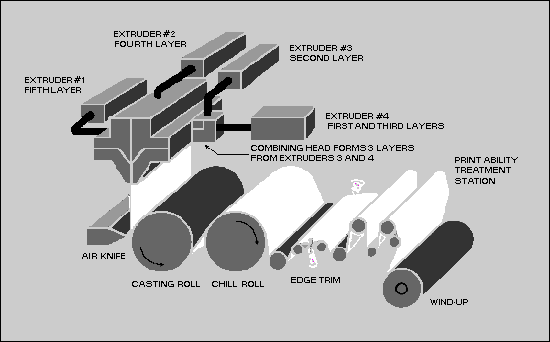





Note: The following index list will take you to separate articles pertaining to the specific subject.
return to Plastic Information and Processes
Introduction:
Converters use two methods of coextrusion: flat cast and blown. This method of producing plastic films is used for a wide variety of products. Ex.: retail bags, stretch wrap, industrial liners, shipping sacks, shrink wrap, garment bags, trash bags, photographic films, agricultural film and magnetic tape, plus many more applications.
Process:
The melted resins come from separate extruders, pass through an adapter, and are layered one on top of the other. Each material brings to the resulting film its own individual properties. The melt contacts the casting roll as it exits the die. The melt is quenched (or chilled to solidity) quickly on the casting roll. This quick quenching minimizes crystallization in materials such as nylon.

![]() Return to the Enginnering Resource Center Home Page. (ERC)
Return to the Enginnering Resource Center Home Page. (ERC)